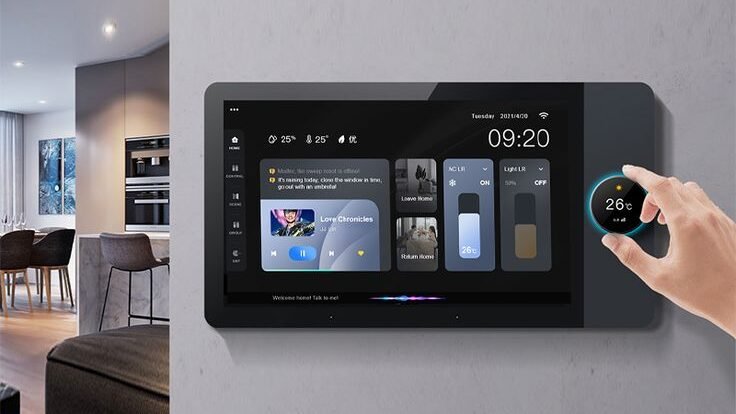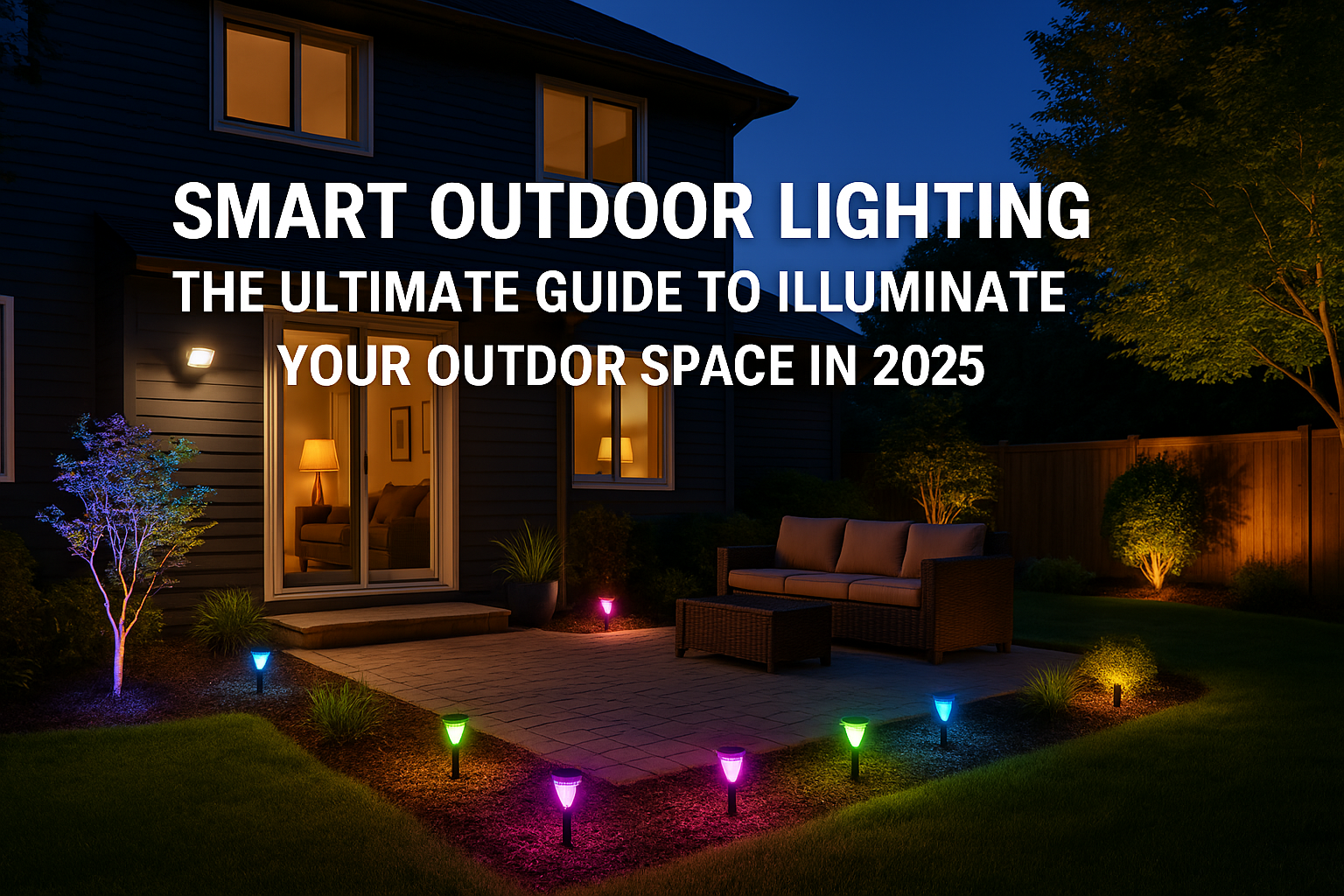
Imagine effortlessly setting the perfect ambiance for any moment in your home with just one tap or, better yet, a voice command. That’s the beauty of smart lighting scenes. From energizing your mornings to winding down at night, smart lighting scenes transform the way you experience lighting, blending convenience, energy efficiency, and personalization into your daily routine.
If you’re a homeowner or a smart home user interested in optimizing your space, this guide will walk you through everything you need to know about smart lighting scenes—from their benefits and setup process to troubleshooting tips and inspiring ideas. By the end of this post, you’ll know exactly how to create lighting scenes that make your home smarter and your life easier.
What Are Smart Lighting Scenes?
A smart lighting scene is a pre-programmed lighting setup that adjusts brightness, color temperature, and even specific light sources to suit an activity, time of day, or mood. These scenes are activated through smart home systems, apps, or voice commands, creating a seamless, hands-free experience.
For example:
- A “Movie Night” scene might dim the lights to 20% and change their color to warm amber for a cozy atmosphere.
- A “Wake-Up” scene might gradually brighten lights over 15 minutes to mimic a natural sunrise.
- A “Work From Home” scene could set cooler lighting hues to keep you alert during work hours.
Smart lighting scenes are often integrated into broader home automation systems, meaning they can interact with other smart devices like thermostats, blinds, speakers, and security systems.
Why Smart Lighting Scenes Are Essential for Homeowners
Smart lighting scenes offer more than just aesthetics. They provide numerous functional and cost-saving benefits that elevate your home experience. Here’s why they’re worth considering:
1. Enhance Convenience
Set and forget! Smart lighting scenes eliminate the need to manually adjust lights throughout the day. With one tap or a voice command, you can instantly switch to the perfect lighting setup.
2. Save Energy and Costs
Automated scenes can help reduce energy waste. For instance, lights can turn off automatically when rooms are unused, or brightness can adjust based on the time of day. One homeowner reported cutting their energy bill by 30% after implementing smart lighting.
3. Improve Home Security
Use lighting scenes to simulate occupancy while you’re away, deterring potential intruders. A family recently programmed outdoor lights to activate at random intervals during their vacation, adding an extra layer of safety.
4. Set the Mood
Whether you’re hosting a dinner party, practicing yoga, or relaxing in the bath, lighting can dramatically enhance the ambiance. Just tailor scenes to match specific activities or moods.
5. Boost Productivity
The correct lighting can improve focus and reduce eye strain. Cool lighting tones are ideal for workspaces, while warmer tones benefit relaxation zones. One user shared that optimizing their home office lighting scene significantly increased their daytime productivity.
What You Need to Create a Smart Lighting Scene
Before you create your first smart lighting scene, gather these essential components:
1. Smart Bulbs
Smart bulbs like Philips Hue, LIFX, or Wyze are the foundation of your scenes, offering features like adjustable brightness, color changes, and scheduling.
2. Smart Switches or Dimmers
If you prefer using your existing light fixtures, smart switches or dimmers can automate them. Look for options compatible with your home automation system.
3. Smart Hub or Controller
Hubs (like Samsung SmartThings or Hue Bridge) allow devices to communicate, ensuring smooth coordination between different smart components.
4. A Supporting Device
Smart lighting systems often connect to apps on your phone, tablet, or smartwatch. For voice-control functionality, devices like Amazon Echo, Google Home, or Apple HomePod are essential.
5. Integration with Smart Assistants
Platforms like Alexa, Google Assistant, or Apple HomeKit allow you to activate scenes using voice commands or schedules.
Step-by-Step Guide to Creating a Smart Lighting Scene
Creating your own scenes is simpler than you might think. Follow these five steps:
Step 1: Define Your Scene’s Purpose
Decide on the specific need or activity the scene will fulfill. For example:
- “Relaxation Scene” for unwinding in the evening.
- “Focus Scene” for working productively.
- “Party Scene” for lively gatherings.
Step 2: Plan Your Color Palette and Brightness Levels
Choose colors and brightness levels to suit your scene’s purpose. For instance, warm whites create a cozy vibe, while soft blues induce calmness.
Step 3: Program Your Lighting Devices
Use the companion app of your smart lighting system to set up presets:
- Open the app (e.g., Philips Hue, LIFX).
- Select the bulb(s) or switch(es) involved in the scene.
- Customize brightness, color, and other settings.
- Save your configuration as a “scene” or “routine.”
Step 4: Set Automation
Link your scene to triggers like:
- Time of day (e.g., Sunset Scene activates at 6 p.m.).
- Voice commands (e.g., Say, “Hey Google, set Movie Night”).
- Motion detectors or occupancy sensors.
Step 5: Test and Tweak
Once set up, test your scene to see how it looks in your space. Adjust settings as needed to ensure a seamless experience.
Tips to Optimize Your Smart Lighting Scenes
- Stick to Simplicity: Avoid overcomplicating scenes with too many settings or color changes.
- Sync with Voice Assistants: Fully integrate your scenes with devices like Alexa or Google Home for effortless control.
- Factor in Natural Light: Adjust scene brightness based on the natural light available in your rooms.
- Prioritize Energy Efficiency: Use motion sensors or timers to automatically turn off lights when they’re not needed.
- Experiment with Colors: Don’t shy away from trying fun colors to match celebrations, holidays, or personal preferences.
Inspiration for Smart Lighting Scene Ideas
Need creative ideas for your scenes? Here are some suggestions:
- “Morning Bliss” – Lights gradually brighten and shift to warm tones for a stress-free wake-up.
- “Family Movie Night” – Lights dim to 10% brightness with a cool blue hue for cinematic vibes.
- “Romantic Dinner” – Soft red tones and a dimmed ambiance create a romantic setting.
- “Outdoor Game Time” – Bright, welcoming hues light up your patio or backyard for social evenings.
- “Holiday Cheer” – Festive colors like red, green, or warm amber to celebrate the season.
Troubleshooting Common Smart Lighting Issues
Here’s how to address some typical problems with lighting scenes:
- Issue: Lights don’t sync correctly.
- Solution: Check app settings or ensure all devices are connected to the same hub.
- Issue: Lights suddenly disconnect.
- Solution: Restart your hub and ensure your internet connection is stable.
- Issue: Voice commands don’t trigger scenes.
- Solution: Re-link your smart assistant to the lighting system and verify command settings.
The Future of Smart Lighting and Home Automation
The rapid progression of home automation means smart lighting is becoming even smarter. Upcoming trends include advances like:
- AI Integration: Personalized lighting recommendations based on your habits and preferences.
- Voice and Gesture Recognition: Adjust lighting with a wave of your hand or nuanced verbal prompts.
- Seamless Ecosystems: Deeper integration with smart home devices like thermostats, security cameras, and appliances.
Brighten Your Home with Smart Lighting Scenes
If you’re ready to create a more convenient, energy-efficient, and personalized living space, smart lighting scenes are a game-changer. Get started with the tips and ideas shared in this guide, and transform your home into an automated oasis.
For even more inspiration and expert advice, explore smart lighting options and guides tailored to your needs. You’ll love the brilliance of a smarter, brighter home.
